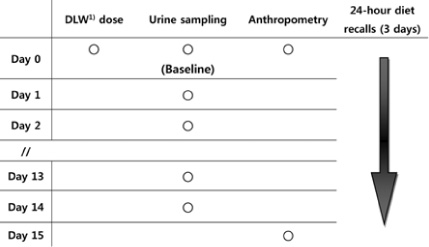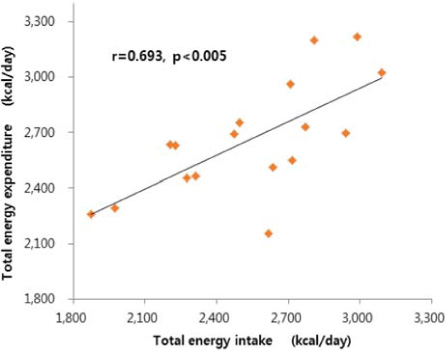References
1. Statistics Korea. KOSTAT statistics plus [Internet] Statistics Korea; 2018. cited 2018 Nov 6. Available from:
http://kostat.go.kr/.
2. Statistics Korea. Statistics report about senior [Internet] Statistics Korea; 2018. cited 2018 Nov 6. Available from:
http://kostat.go.kr/.
3. Kim HR. Nutrition transition and shiting diet linked noncommunicable disease and policy issues. Health Welf Policy Forum 2013;198:27–37.
4. Ma Y, Hebert J, Ebbeling C, Ockene I. International aspects of coronary heart disease epidemiology. In : Becker RC, Alpert JS, eds. Cardiovascular medicine-practice and management London: Arnold; 2001. p. 3–20.
5. Liu S. Whole-grain foods, dietary fiber, and type 2 diabetes: searching for a kernel of truth. Am J Clin Nutr 2003;77(3):527–529.
6. World Cancer Research Fund. Food, nutrition, physical activity and the prevention of cancer: a global perspective [Internet] World Cancer Research Fund/American Institute for Cancer Research; 2007. cited 2018 Nov 7. Available from:
http://www.dietandcancerreport.org/.
7. Michels KB. Nutritional epidemiology-past, present, future. Int J Epidemiol 2003;32(4):486–488.
8. Baik I, Cho NH, Kim SH, Shin C. Dietary information improves cardiovascular disease risk prediction models. Eur J Clin Nutr 2013;67(1):25–30.
9. Streppel MT, Sluik D, van Yperen JF, Geelen A, Hofman A, Franco OH. Nutrient-rich foods, cardiovascular diseases and all-cause mortality: the Rotterdam study. Eur J Clin Nutr 2014;68(6):741–747.
10. Ma Y, Olendzki BC, Pagoto SL, Hurley TG, Magner RP, Ockene IS. Number of 24-hour diet recalls needed to estimate energy intake. Ann Epidemiol 2009;19(8):553–559.
11. Hill RJ, Davies PS. The validity of self-reported energy intake as determined using the doubly labelled water technique. Br J Nutr 2001;85(4):415–430.
12. The Korean Society of Nutritional Epidemiology. Nutritional epidemiology (translated version) 3th edth ed. Seoul: Kyomunsa; 2013. USA original written by Willett W.
13. Lee MS, Woo MK, Kim SA, Oh SI, Kwak CS. Reproducibility of nutrient intake estimated by three-day 24-hour dietary recall of middle-aged subjects for 6 month intervals. Korean J Community Nutr 2003;8(4):603–609.
14. Ministry of Health and Welfare of Korea, Korea Centers for Disease Control and Prevention. Korea health statistics 2016: Korea national health and nutrition examination survey (KNHANES VII-1) Ministry of Health and Welfare of Korea; 2018. 01. Report No. 117002.
15. Brio G, Hulshof KF, Ovesen L, Amorim Cruz JA. Selection of methodology to assess food intake. Eur J Clin Nutr 2002;56Suppl 2. :25–32.
16. Salvador Castell G, Serra-Majem L, Ribas-Barba L. What and how much do we eat? 24-hour dietary recall method. Nutr Hosp 2015;31(3):46–48.
17. Bathalon GP, Tucker KL, Hays NP, Vinken AG, Greenberg AS, McCrory MA. Psychological measures of eating behavior and the accuracy of 3 common dietary assessment methods in healthy postmenopausal women. Am J Clin Nutr 2000;71(3):739–745.
18. Sawaya AL, Tucker K, Tsay R, Willett W, Saltzman E, Dallal GE. Evaluation of four methods for determining energy intake in young and older women: comparison with doubly labeled water measurements of total energy expenditure. Am J Clin Nutr 1996;63(4):491–499.
19. Hill JO, Wyatt HR, Peters JC. Energy balance and obesity. Circulation 2012;126(1):126–132.
20. Schoeller DA. How accurate is self-reported dietary energy intake? Nutr Rev 1990;48(10):373–379.
21. Johnson RK, Driscoll P, Goran MI. Comparison of multiple-pass 24-hour recall estimates of energy intake with total energy expenditure determined by the doubly labeled water method in young children. J Am Diet Assoc 1996;96(11):1140–1144.
22. Johnson RK, Soultanakis RP, Matthews DE. Literacy and body fatness are associated with underreporting of energy intake in US low-income women using the multiple-pass 24-hour recall: a doubly labeled water study. J Am Diet Assoc 1998;98(10):1136–1140.
23. Subar AF, Kipnis V, Troiano RP, Midthune D, Schoeller DA, Bingham S. Using intake biomarkers to evaluate the extent of dietary misreporting in a large sample of adults: the open study. Am J Epidemiol 2003;158(1):1–13.
24. Lee SJ, Kim HR. Total energy expenditure of professional soccer players measured by the doubly labeled water method. J Exerc Nutr Biochem 2003;7(3):214–246.
25. Kim EK, Ndahimana D, Ishikawa-Takata K, Lee S, Kim H, Lim K. Validation of dietary reference intakes for predicting energy requirements in elementary school-age children. Nutr Res Pract 2018;12(4):336–341.
26. Park J, Kazuko IT, Kim E, Kim J, Yoon J. Estimating free-living human energy expenditure: practical aspects of the doubly labeled water method and its applications. Nutr Res Pract 2014;8(3):241–248.
27. Lee YN. Development of food and nutrient database: food portion/weight database Korea Health Industry Development Institute; 2007. 12. Report No. 2007-114.
28. Kim EK, Kim JH, Kim MH, Ndahimana D, Yean SE, Yoon JS. Validation of dietary reference intake equations for estimating energy requirements in Korean adults by using the doubly labeled water method. Nutr Res Pract 2017;11(4):300–306.
29. Bhutani S, Racine N, Shriver T, Schoeller DA. Special considerations for measuring energy expenditure with doubly labeled water under atypical conditions. J Obes Weight Loss Ther 2015;5Suppl 5. :1–20.
30. Black AE, Prentice AM, Coward WA. Use of food quotients to predict respiratory quotients for the doubly-labelled water method of measuring energy expenditure. Hum Nutr Clin Nutr 1986;40(5):381–391.
31. Weir JB. New methods for calculating metabolic rate with special reference to protein metabolism. J Physiol 1949;109(1-2):1–9.
32. Barnston AG. Correspondence among the correlation, RMSE, and Heidke forecast verification measures; refinement of the Heidke score. Weather Forecast 1992;7(4):699–709.
33. Weijs PJ. Validity of predictive equations for resting energy expenditure in US and Dutch overweight and obese class I and II adults aged 18-65 y. Am J Clin Nutr 2008;88(4):959–970.
34. Frankenfield D, Roth-Yousey L, Compher C. Comparison of predictive equations for resting metabolic rate in healthy nonobese and obese adults: a systematic review. J Am Diet Assoc 2005;105(5):775–789.
35. Marra M, Montagnese C, Sammarco R, Amato V, Della Valle E, Franzese A. Accuracy of predictive equations for estimating resting energy expenditure in obese adolescents. J Pediatr 2015;166(6):1390–1396.
36. Johnson RK, Goran MI, Poehlman ET. Correlates of over- and underreporting of energy intake in healthy older men and women. Am J Clin Nutr 1994;59(6):1286–1290.
37. Rothenberg E, Bosaeus I, Lernfelt B, Landahl S, Steen B. Energy intake and expenditure: validation of a diet history by heart rate monitoring, activity diary and doubly labeled water. Eur J Clin Nutr 1998;52(11):832–838.
38. Riumallo JA, Schoeller D, Barrera G, Gattas V, Uauy R. Energy expenditure in underweight free-living adults: impact of energy supplementation as determined by doubly labeled water and indirect calorimetry. Am J Clin Nutr 1989;49(2):239–246.
39. Black AE, Bingham SA, Johansson G, Coward WA. Validation of dietary intakes of protein and energy against 24 hour urinary n and DLW energy expenditure in middle-aged women, retired men and post-obese subjects: comparisons with validation against presumed energy requirements. Eur J Clin Nutr 1997;51(6):405–413.
40. Tomoyasu NJ, Toth MJ, Poehlman ET. Misreporting of total energy intake in older men and women. J Am Geriatr Soc 1999;47(6):710–715.
41. Goran MI, Poehlman ET. Total energy expenditure and energy requirements in healthy elderly persons. Metabolism 1992;41(7):744–753.
42. Cho YE, Lee SL, Cho EH, Ria-Ann LL, Kwak EH, Kim YA. Comparison of nutrient intakes of Korean elderly people living in rural area between 24-hour recall and food frequency method. J Korean Soc Food Sci Nutr 2006;35(6):698–707.
43. Gemming L, Rush E, Maddison R, Doherty A, Gant N, Utter J. Wearable cameras can reduce dietary under-reporting: doubly labelled water validation of a camera-assisted 24 h recall. Br J Nutr 2015;113(2):284–291.
44. Gemming L, Doherty A, Kelly P, Utter J, Mhurchu CN. Feasibility of a sensecam-assisted 24-h recall to reduce under-reporting of energy intake. Eur J Clin Nutr 2013;67(10):1095–1099.







